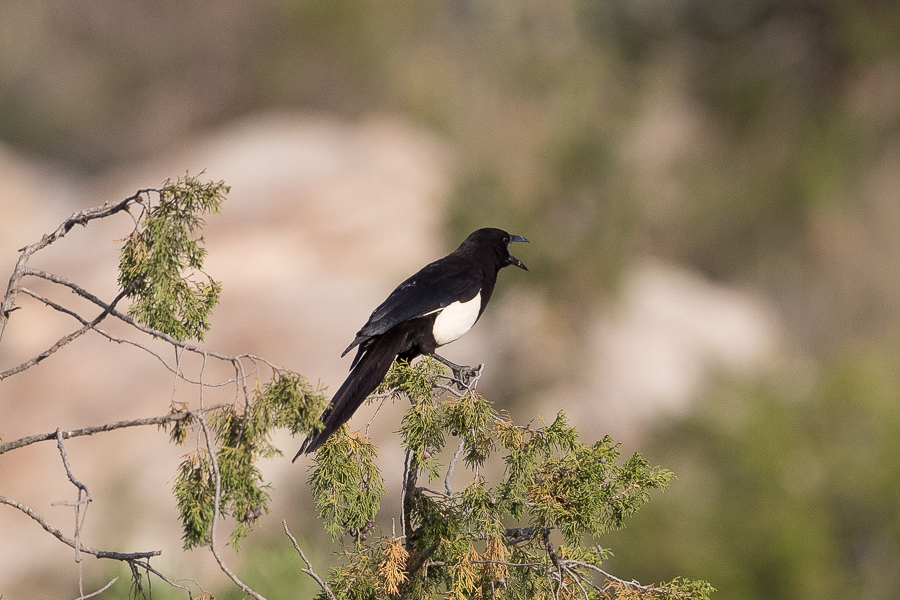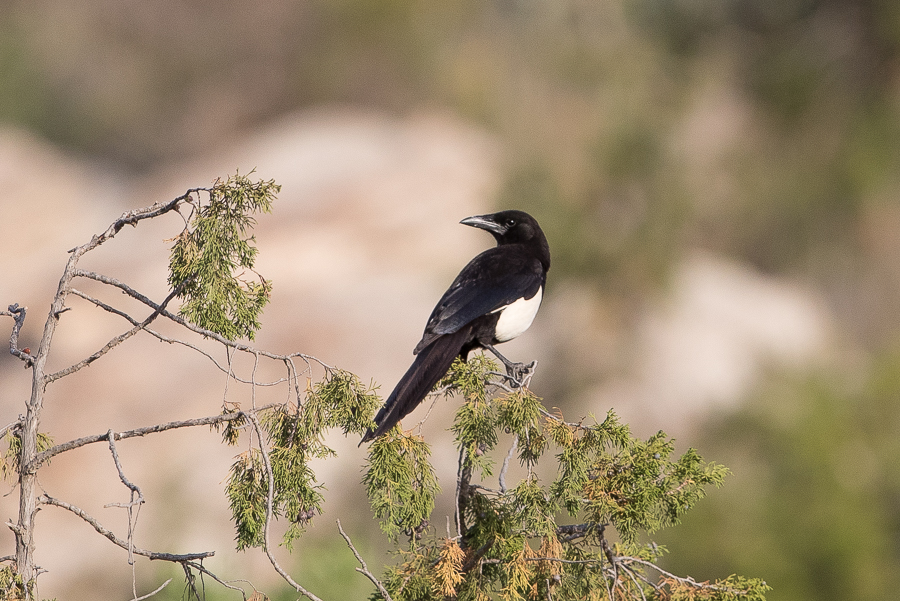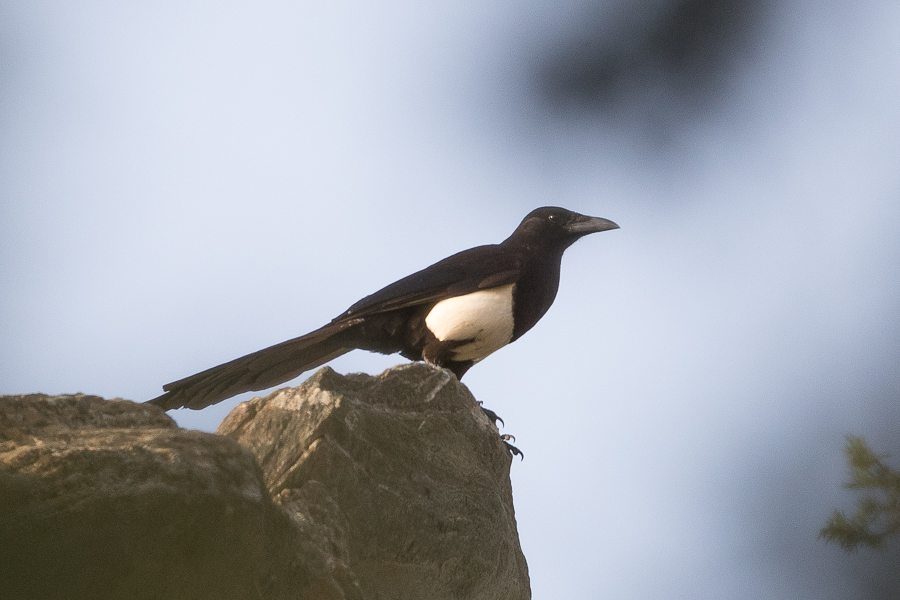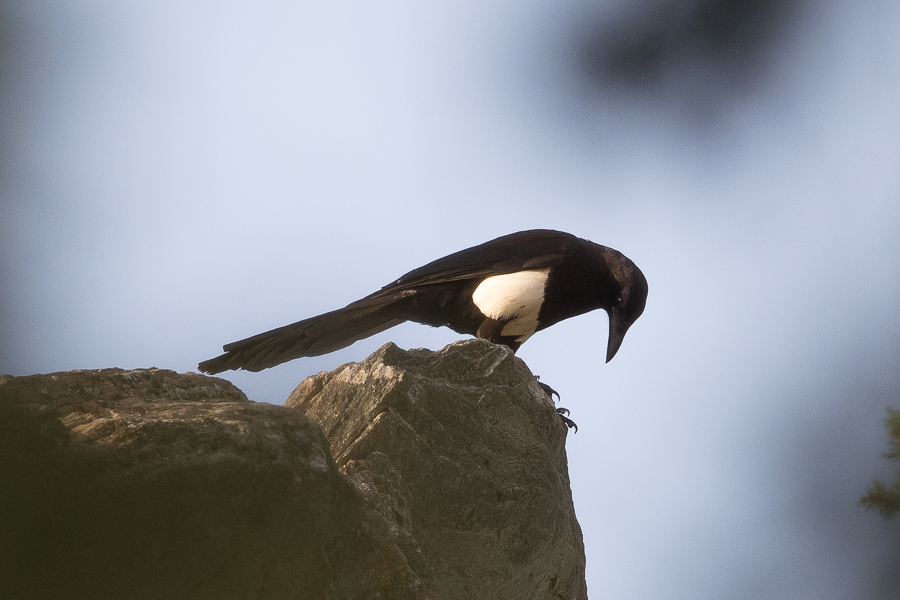Whilst in the southwest on the Kingdom in May I saw at least five Asir (Arabian) Magpie at two different locations. Old nests were discovered near Tanoumah and near An Namas with adults and at least one juvenile seen near the nests. These birds remain very difficult to photograph and are constantly on the move looking for food.
The taxonomic position of Asir (Arabian) MagpiePica asirensisis uncertain with some authorities regarding it as a full species such as HBW and others not. Two new papers: Deep Phylogeographic Breaks in MagpiePica picaAcross the Holarctic: Concordance with Bioacoustics and Phenotypes by Alexey P. Kryukovet aland Complete taxon sampling of the avian genus Pica (magpies) reveals ancient relictual populations and synchronous Late-Pleistocene demographic expansion across the Northern Hemisphere by Gang Songet alboth indicated the birds are a separate species to Eurasian MagpiePica Pica.
Arabian Magpies are sedentary and localised and occur in upland valleys and wadis, of the Asir highlands between 1850–3000 m asl.P. asirensisisis a taxon with a very restricted range, confined to a small region within Saudi Arabia where numbers are decreasing probably because of heavy disturbance by tourism and perhaps changes in climate.







Jem Babbington
Jem Babbington is a keen birder and amateur photographer located in Dhahran, Eastern Saudi Arabia where he goes birding every day. Jem was born in England and is a serious local patch and local area birder who has been birding for almost forty years and has birded in more than fifty countries. Jem is learning to ring birds in Bahrain as a perfect way to learn more about the birds of the area. Saudi Arabia is a very much under-watched and under-recorded country.

Leave a Reply